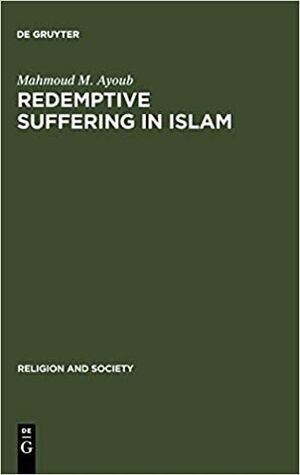Redemptive Suffering in Islam: A Study of the Devotional Aspects of Ashura in Twelver Shi'ism
 | |
| Author | Mahmoud Ayoub |
|---|---|
| Language | English |
| Genre | Historic |
| Published | 1978 |
| Publisher | de Gruyter |
| Pages | 304 |
The book Redemptive Suffering in Islam: A Study of the Devotional Aspects of Ashura in Twelver Shi'ism is a document to express and examine in detail the sacrifice and devotion of Imam Hussein in his life.
About the author
Mahmoud M. Ayoub was born in South Lebanon. He received his education at the American University of Beirut (B.A., Philosophy, 1964), the University of Pennsylvania (M.A., Religious Thought, 1966), and Harvard University (Ph.D., History of Religion, 1975). He is a faculty associate in Shi’ite Islam and Christian-Muslim relations affiliated with the Macdonald Center for the Study of Islam and Christian-Muslim Relations at Hartford Seminary. Ayoub is also a visiting professor at the University of Balamand in Lebanon and editorial consultant for the Oxford Dictionary of Islam. From 1988 to 2008 he was a professor and director of Islamic studies in the Department of Religion at Temple University.
Ayoub is the author of a number of books including, Redemptive Suffering in Islam and The Qur’an and Its Interpreters (vol. 1 & 2). The summer of 2000 saw the release of his two-volume publication, Dirasat fi al-‘Alaqat al-Masihiyyah al-Islamiyyah in Arabic (Studies in Christian-Muslim Relations). Islam: Faith and History appeared in 2004. In addition, his articles have appeared in books and journals, like, The Muslim World, Journal of the American Oriental Society, Bulletin of the Institute of Middle Eastern Studies (Tokyo, Japan) and Islam-Christiana (Rome, Italy), among many others.
About the book
This book published in de Gruyter (1 Nov. 1978), has 304 pages and best sellers rank of 2,220,353 in Books.
The present book is about Ashura and is inspired by people of Mashhad's mourning. It examines the life of Imam Hussein and his specific characteristics in the Shiite religion. In this regard the author discusses the general literature of taziyah and pilgrimage and poems and writings specified to the mourning of the martyrdom of Imam Hussein and appreciating the sacrifice he made.
Abstract of chapters
Chapter 1, THE HOUSE OF SORROWS (Bayt al-Ahzan)
The first part is about Bayt al-Ahzan, and the author discusses the value of suffering in general and the suffering of the Ahl al-Bayt in particular. He considers that being a Shiite is conditioned on participation in the suffering of the Ahl al-Bayt (twelve imams, the Prophet and his daughter). including suffering for Fatimah al-Zahra who has shown both hope and despair to the Shiite community, through her suffering, death and ultimate transcendence,
Chapter 2, THE PROOFS OF GOD (Hujaj Allah)
In the second part, the author explains the Shiite doctrine about the imams and divine prophets and the roles in the history of salvation and human judgment. These two chapters are an introduction to the following parts.
Chapter 3, THE MASTER OF THE YOUTHS OF PARADISE (Sayyid_Shabab Ahl al-]annah)
This part deals with Imam Hussein, his birth, his childhood and his following years just before his martyrdom. In all these stages, his designated death as a martyr was predicted and emphasized.
Chapter 4, THE WRONGED MARTYR (al-Shahid al-Mazlum)
The fourth part examines the martyrdom of Imam Hussein from Shiite understanding. The author introduces examples of Islamic historians who dealt with this issue, such as Tabari and Shaykh al-Mufid. He notes that the focus is not only on historical events but also on society's understanding of how these events occur.
Chapter 5, THE SIGH OF THE SORROWFUL (Nafas af-Mahmum)
In the fifth part, Ayoub deals with the issue of the reward of weeping for the Imams' suffering, especially Imam Hussein', as well as the special reward (thawab) of composing poetry (marathi) for them. This part and the next part show how the society is directly related to the events of Karbala and the life and missions of the Imams.
Chapter 6, AT THE POOL Of AL-KAWTHAR (Ala Haud al-Kawthar)
This part deals with the issue of the Shiites and the Shiite community and how they sympathize with the Ahl al-Bayt. Ayoub first examines the role of Ahl al-Bayt through the concept of the hawq al-kawthar (a large pool or basin), Then he reminds that the result of these sympathies will be answered by the avenger of Ale-Muhammad (the Mahdi). The Promised Mahdi will avenge the blood of those who have been martyred or persecuted in the way of God. As a result, the Shiites will be comforted.